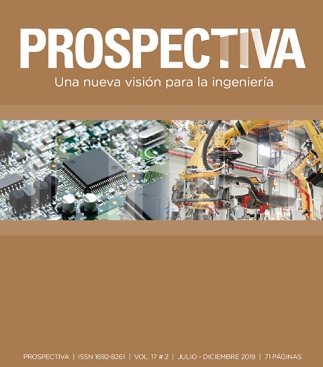An analysis of user-interface creation complexity using a model-driven design approach
DOI:
https://doi.org/10.15665/rp.v17i2.2078Resumen
Model-Driven Development (MDD) is a software development approach that facilitates problem comprehension. MDD is carried out based on level of abstraction attained by working with models. When using models to create user-interfaces, development time can be reduced significantly. However, automatic user-interface generation is done with preestablished templates that might not fulfill all the requirements clients. These templates might also be too general and sometimes provide few customization options. In this paper, we review research on the usage of MDD for user-interface development. We also study how automatic user-interface generation can result in limitations as the need might arise for repeatedly modifying model and code.
Citas
J. Quintero, «Marco de Referencia para la Evaluación de Herramientas Basadas en MDA», en Memorias del X Workshop IDEAS, 2007, n.o c, pp. 1-14.
J. Gamalielsson, B. Lundell, y A. Mattsson, «Open Source Software for Model Driven Development: A Case Study», Open Source Systems: Grounding …, n.o Ebert 2008, pp. 348-367, 2011.
G. Hinkel, T. Goldschmidt, E. Burger, y R. Reussner, «Using internal domain-specific languages to inherit tool support and modularity for model transformations», Softw Syst Model, vol. 18, n.o 1, pp. 129-155, feb. 2019.
P. Mohagheghi, M. A. Fernandez, J. A. Martell, M. Fritzsche, y W. Gilani, «MDE Adoption in Industry: Challenges and Success Criteria», en Models in Software Engineering, 2009, pp. 54-59.
M. Staron, «Adopting Model Driven Software Development in Industry – A Case Study at Two Companies», en Model Driven Engineering Languages and Systems, 2006, pp. 57-72.
J. Whittle, J. Hutchinson, M. Rouncefield, H. Burden, y R. Heldal, «Industrial Adoption of Model-Driven Engineering: Are the Tools Really the Problem?», en Model-Driven Engineering Languages and Systems, 2013, pp. 1-17.
N. Aquino, «Adding flexibility in the model-driven engineering of user interfaces», en Proceedings of the 1st ACM SIGCHI symposium on Engineering interactive computing systems - EICS ’09, 2009, p. 329.
S. Trujillo et al., «Feature-oriented refinement of models, metamodels and model transformations», ACM International Conference Proceeding Series, pp. 87-94, 2009.
D. Budgen y P. Brereton, «Performing systematic literature reviews in software engineering», presentado en Proceedings of the 28th international conference on Software engineering, 2006, pp. 1051-1052.
«Systematic reviews and meta-analytic techniques - ScienceDirect». [En línea]. Disponible en: https://www-sciencedirect-com.ezproxy.unal.edu.co/science/article/pii/S1055858618300970. [Accedido: 18-mar-2019].
L. Askie y M. Offringa, «Systematic reviews and meta-analysis», Seminars in Fetal and Neonatal Medicine, vol. 20, n.o 6, pp. 403-409, dic. 2015.
B. Uzun y B. Tekinerdogan, «Model-driven architecture based testing: A systematic literature review», Information and Software Technology, vol. 102, pp. 30-48, oct. 2018.
Y. Yu, Y. Lin, Z. Hu, S. Hidaka, H. Kato, y L. Montrieux, «Maintaining invariant traceability through bidirectional transformations», en Proceedings - International Conference on Software Engineering, 2012, pp. 540-550.
J. Vanderdonckt, «Model-Driven Engineering of User Interfaces : Promises , Successes , Failures , and Challenges», en Proceedings of the National Conference on Human-Computer Interaction, 2008, pp. 1-10.
V. López-Jaquero y F. Montero, «Diseño de reglas de adaptación y transformación para interfaces de usuario.», RASI, vol. 7, n.o 1, pp. 53-58, 2010.
J. Vanderdonckt y F. M. Simarro, «Generative pattern-based design of user interfaces», Proceedings of the 1st International Workshop on Pattern-Driven Engineering of Interactive Computing Systems - PEICS ’10, pp. 12-19, 2010.
C. Blanco, I. G. R. de Guzmán, E. Fernández-Medina, y J. Trujillo, «An MDA approach for developing secure OLAP applications: Metamodels and transformations», Computer Science and Information Systems, vol. 12, n.o 2, pp. 541-565, 2015.
A. Rodrigues Da Silva, «Model-driven engineering: A survey supported by the unified conceptual model», Computer Languages, Systems and Structures, vol. 43, pp. 139-155, 2015.
S. Fincher et al., «Perspectives on HCI patterns», en CHI ’03 extended abstracts on Human factors in computing systems - CHI ’03, 2003, p. 1044.
Descargas
Publicado
Número
Sección
Licencia
Los autores/as que publiquen en esta revista aceptan las siguientes condiciones:
- Los autores/as ceden los derechos de autor y dan a la revista el derecho de la primera publicación, con el trabajo registrado con la licencia de atribución de Creative Commons, que permite a terceros utilizar lo publicado siempre que mencionen la autoría del trabajo y a la primera publicación en esta revista.
- Los autores/as pueden realizar otros acuerdos contractuales independientes y adicionales para la distribución no exclusiva de la versión del artículo publicado en esta revista (p. ej., incluirlo en un repositorio institucional o publicarlo en un libro) siempre que indiquen claramente que el trabajo se publicó por primera vez en esta revista.
- Se permite y recomienda a los autores/as a publicar su trabajo en Internet (por ejemplo en páginas institucionales o personales) antes y durante el proceso de revisión y publicación, ya que puede conducir a intercambios productivos y a una mayor y más rápida difusión del trabajo publicado (vea The Effect of Open Access).
Instrucciones para el llenado de la Certificación de Originalidad y la Cesión de Derechos de Autor.
- Haga click aquí y baje el formulario de Certificación de Originalidad y la Cesión de Derechos de Autor.
- En cada uno de los campos para rellenar haga click y complete lo correspondiente.
- Una vez llenos los campos, copie al final su firma escaneada o firma digital. Favor ajustar el tamaño de la firma en el formulario.
- Finalmente, lo puede guardar como pdf y enviarlo a través de la palataforma OJS, como archivo complementario.
Si tiene dudas contáctenos, por favor.


